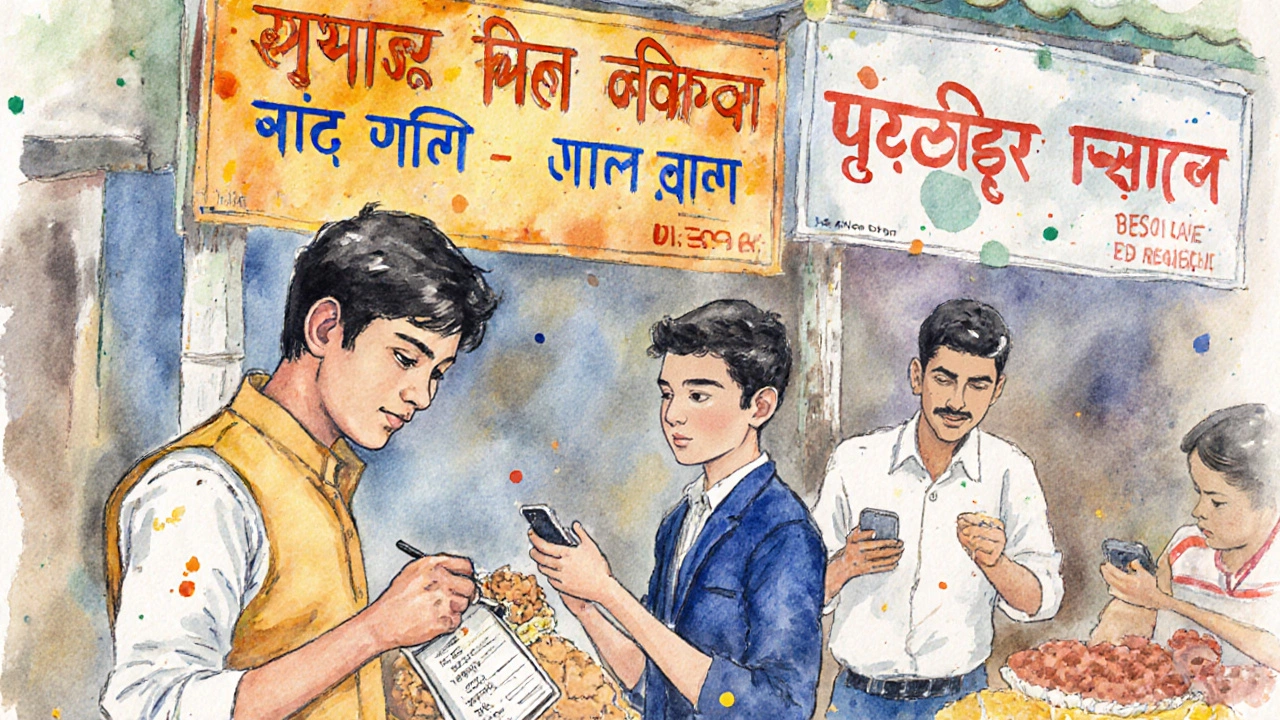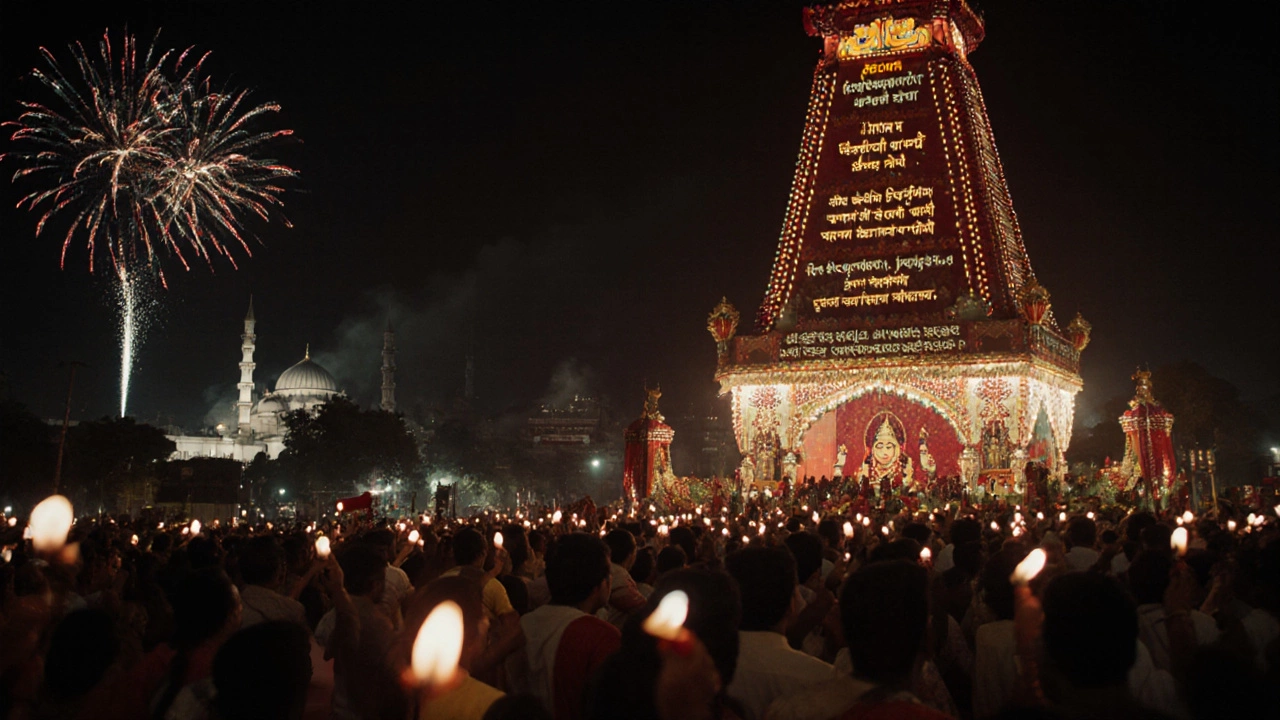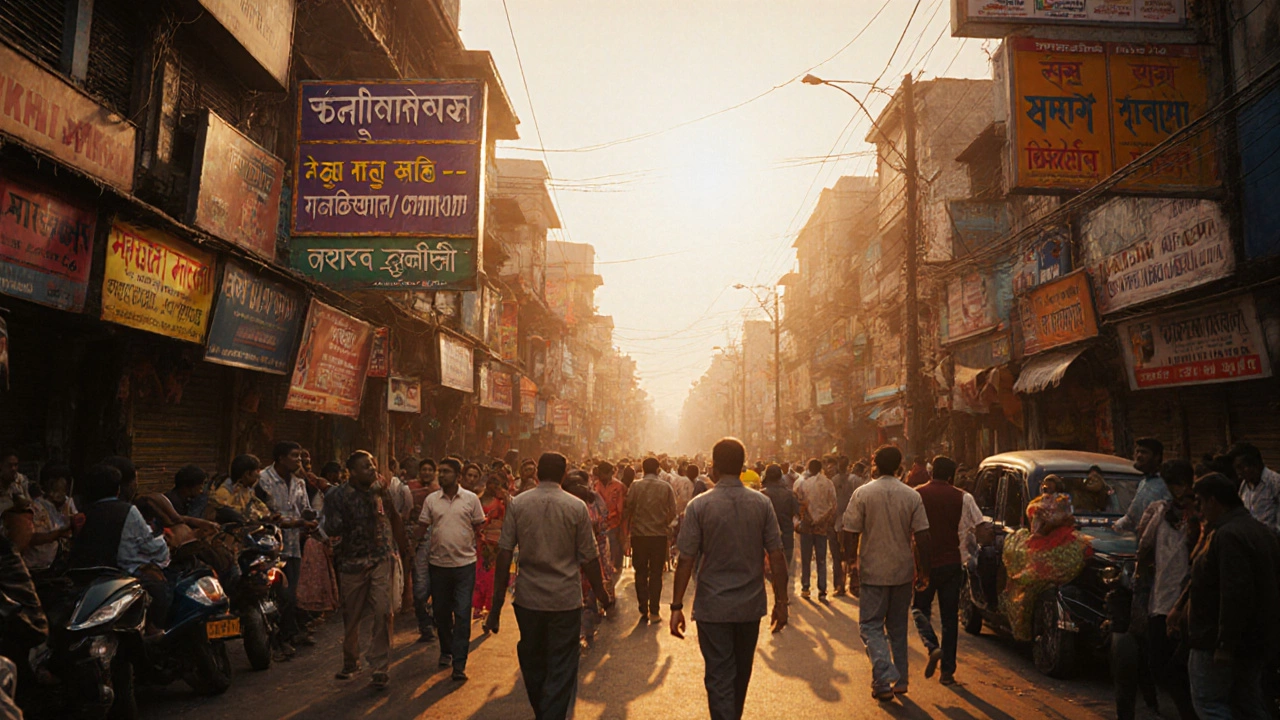Ever walked down a bustling Kolkata street and wondered why you hear a mash‑up of sounds? You’re not alone. The city’s linguistic tapestry is a mix of the official state language, colonial legacies, and migrant voices. This guide breaks down exactly what language you’ll encounter, when, and why it matters for your visit.
Where Kolkata fits in India’s linguistic map
India is home to 22 officially recognised languages and hundreds of dialects. Kolkata is the capital of West Bengal, a state where Bengali is the dominant language. Because the city is a commercial hub, you’ll also hear English, Hindi, Urdu and a handful of community languages spoken by migrants from neighboring states.
Bengali: the primary language
The Bengali language belongs to the Indo‑Aryan family and is spoken by more than 230 million people worldwide is the mother tongue of roughly 80‑85 % of Kolkata’s residents. In everyday life, you’ll see Bengali on shop signs, government forms, and public transport announcements. The script is elegant, with a distinctive horizontal line running across the top of each character.
English and its role in the city
Thanks to the British colonial period, English enjoys a strong presence in Kolkata. It’s the language of higher education, many corporate offices, and the tourism industry. While only about 12‑15 % of the population claims fluency, you’ll find English signage in metros, airports, and popular eateries. Most younger professionals switch fluidly between Bengali and English - a practice called “code‑switching”.

Other languages you’ll hear
- Hindi language India’s most widely spoken language, used as a lingua‑franca across the country - common among migrants from Uttar Pradesh, Bihar and Delhi.
- Urdu language shares the same grammar as Hindi but uses a Persian‑Arabic script; spoken by a small but influential community - especially in traditional sweets shops and certain cultural festivals.
- Marathi and Gujarati - spoken by business communities who have set up shops in the Burrabazar and New Market areas.
- Tribal languages such as Santhali and Oriya - heard in neighborhoods where workers from Jharkhand, Odisha and neighboring states reside.
Kolkata’s unique dialect
Even within Bengali, Kolkata has its own flavour. The “Kolkata accent” drops the inherent vowel sound in many words and adds a characteristic sing‑song rhythm. Phrases like “ami jaa-chi” become “ami ja‑chi”. This dialect is a badge of local identity and is celebrated in films, poetry, and the city’s legendary “adda” culture.
Language and festivals in Kolkata
Festivals are a great way to hear language in action. During Durga Puja, the city’s biggest celebration, you’ll encounter Bengali chants, Sanskrit verses, and English commentary for tourists. The Kolkata language vibe shifts to more formal Bengali, peppered with mythological terms. During Christmas, you’ll hear English carols, while the Muslim festival of Eid brings Urdu prayers and Arabic greetings.

Tips for visitors: navigating language barriers
- Learn a few basic Bengali phrases - a simple “Nomoskar” (hello) or “Kemon achhen?” (how are you?) goes a long way.
- Carry a pocket‑sized phrasebook or a translation app; most apps support Bengali script now.
- When in doubt, switch to English. Most hotel staff, taxi drivers, and metro personnel understand basic English.
- Use gestures and smile - Kolkata’s residents are famously warm and will help you even if the language isn’t perfect.
- Respect local pronunciation. Trying to say “Durga” with the correct Bengali inflection shows cultural sensitivity.
Quick reference checklist
| Language | Approx. % of population | Typical contexts |
|---|---|---|
| Bengali | 80‑85 % | Everyday conversation, media, education |
| English | 12‑15 % | Business, tourism, higher education |
| Hindi | 5‑8 % | Migrant communities, retail |
| Urdu | 2‑3 % | Traditional markets, cultural events |
| Other regional languages | ~5 % | Specific neighborhoods, workplaces |
Frequently Asked Questions
Do most people in Kolkata speak English?
About 12‑15 % are fluent, but English is widely used in business, tourism and education. You’ll get by with a few English words in most service‑oriented places.
Is Bengali the same everywhere in West Bengal?
The base language is the same, but accents differ. Kolkata’s dialect is faster and drops some vowel sounds, while rural areas retain a softer tone.
Can I get train tickets in Kolkata without speaking Bengali?
Yes. Ticket counters have English signage and staff are accustomed to handling tourists. Carry your destination name written in Bengali script to speed things up.
What language is used during Durga Puja celebrations?
The chants and prayers are predominantly in Bengali, with many verses in Sanskrit. Organisers provide English translations for international visitors.
Are there language schools in Kolkata for foreigners?
Yes. Institutions like the Indian Institute of Language Studies and several private centres offer short‑term Bengali courses tailored for travelers.
